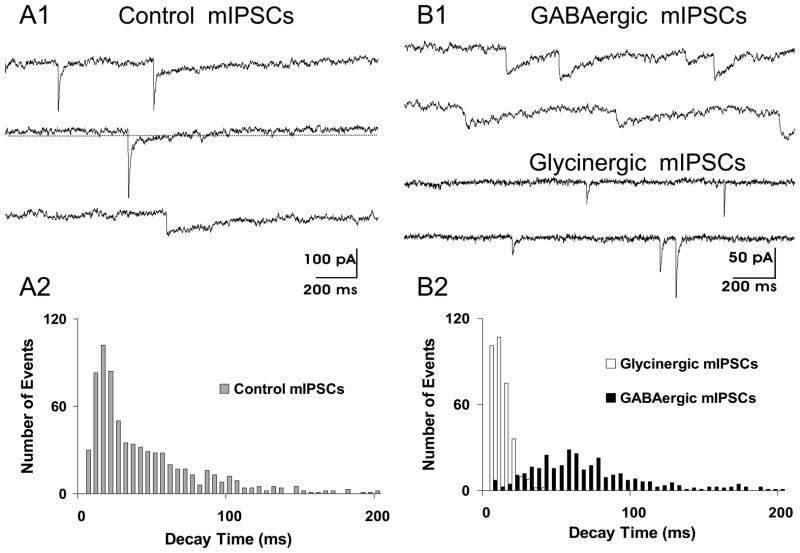Fig. 5.
Co-transmission of GABA and glycine to a HM is shown by the presence of dual component spontaneous miniature inhibitory postsynaptic currents (mIPSCs). (A1) Control recording show the presence of three types of mIPSCs based on their temporal kinetics. Slow decaying GABAergic mIPSCs, fast decaying glycinergic mIPSCs and dual component mIPSCs, having both fast and slow decaying components. Presumably the dual component mIPSCs are due to co-release of both GABA and glycine from a single presynaptic vesicle. (A2) Distribution of mIPSC decay times in control conditions showing that the distribution is skewed toward longer decay times. (B1) In the presence of strychnine to block glycine receptors, isolated slow decaying GABAergic mIPSCs are recorded (top two traces). In the presence of bicuculline to block GABAA receptors, isolated fast decaying glycinergic mIPSCs are recorded (lower two traces). (B2) Distribution of mIPSC decay times of GABAergic and glycinergic mIPSCs shows two unique distributions (P<0.001) based on Kolmogorov-Smirnoff statistical testing of these distributions. (Adapted from O’Brien and Berger, 1999).

